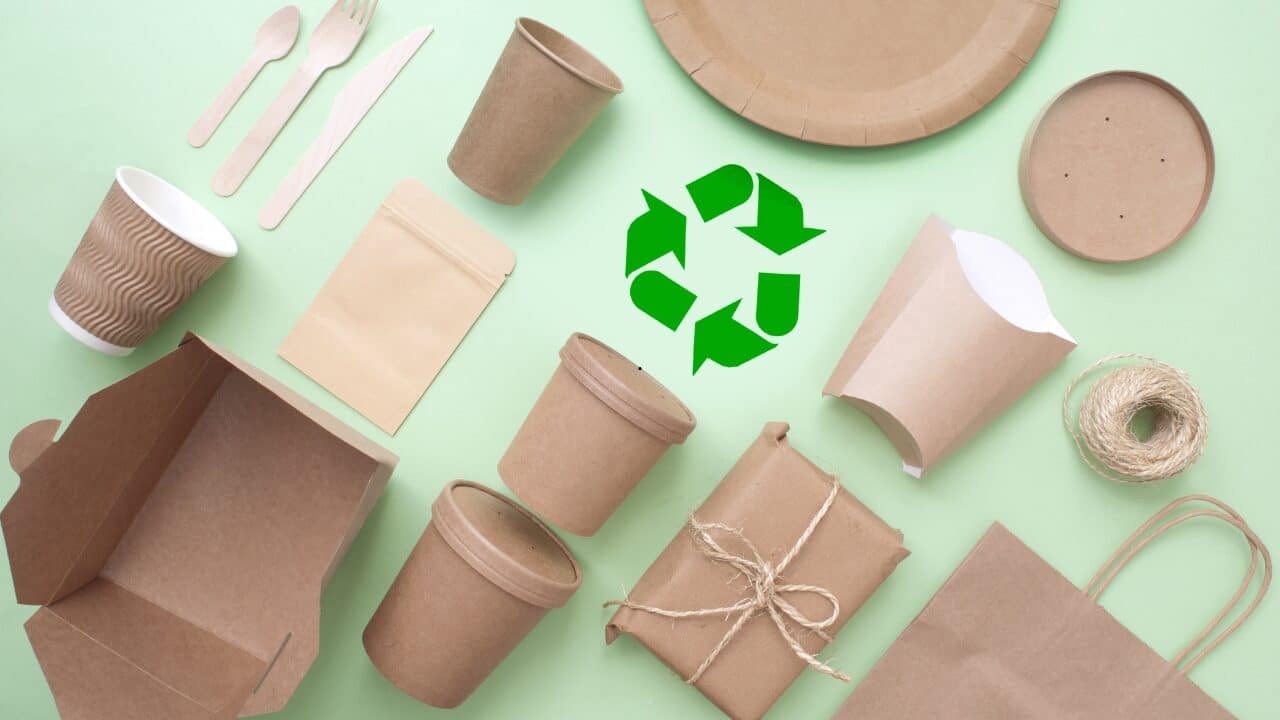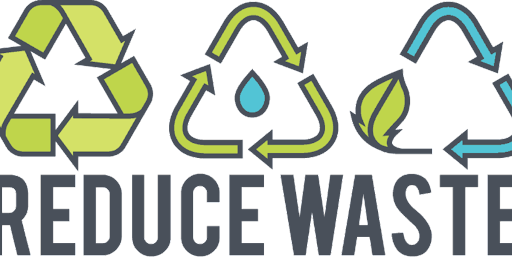Table of Contents
Solid Waste Management
Solid Waste
Solid wastes are the organic and inorganic waste materials such as product packaging, grass clippings, furniture, clothing, bottles, kitchen refuse, paper, appliances, paint cans, batteries, etc., produced in a society, which do not generally carry any value to the first user(s).
Solid wastes, thus, encompass both a heterogeneous mass of wastes from the urban community as well as a more homogeneous accumulation of agricultural, industrial and mineral wastes.
Solid Waste Management
Solid waste management refers to the supervised handling of waste material from generation at the source through the recovery processes to disposal.
Solid waste in the US (%age by weight)
Diversification of Wastes (Example of E-wastes)
Every year 20 to 50 million tonnes of e-waste are generated worldwide.
- About 53 millions tons were produced worldwide in 2009 and only 13% of it was recycled
- By 2020 e-waste from old computers in South Africa and China will have jumped by 200-400% and by 500% in India from 2007 levels
Dangerous chemicals and metals, such as mercury, cadmium, lead, are included in e-wastes and may leach into the environment and local ecosystem.
Poor waste management further compounds the water issue
Highly contaminated leach ate seeps untreated into groundwater, a source of drinking water….
Common Terms used in Solid Waste Management
Source based Classification
- Residential: This refers to wastes from dwellings, apartments etc., and consists of leftover food, vegetable peels, plastic, clothes, ashes, etc.
- Commercial: This refers to wastes consisting of leftover food, glasses, metals, ashes, etc., generated from stores, restaurants, markets, hotels, motels, auto-repair shops, medical facilities etc.
- Institutional: This mainly consists of paper, plastic, glasses, etc., generated from educational, administrative and public buildings such as schools, colleges, offices, prisons, etc.
- Industrial: This mainly consists of process wastes, ashes, demolition and construction wastes, hazardous wastes, etc., due to industrial activities.
- Agricultural: This mainly consists of spoiled food grains and vegetables, agricultural remains, litter, etc., generated from fields, orchards, vineyards, farms, etc.
Type based Classification
- Garbage: This refers to animal and vegetable wastes resulting from the handling, sale, storage, preparation, cooking and serving of food. Garbage contains putrescible (rotting) organic matter, which produces an obnoxious odour.
- Ashes and residues: These are substances remaining from the burning of wood, coal, charcoal, coke and other combustible materials for cooking and heating in houses, institutions and small industrial establishments.
- Combustible and non-combustible wastes: These consist of wastes generated from households, institutions, commercial activities, etc., excluding food wastes and other highly putrescible material.
- Hazardous wastes: Hazardous wastes are those defined as wastes of industrial, institutional or consumer origin that are potentially dangerous either immediately or over a period of time to human beings.
- Biodegradable and non-biodegradable wastes: Biodegradable wastes mainly refer to substances consisting of organic matter such as leftover food, vegetable and fruit peels, paper, textile, wood, etc., generated from various household and industrial activities. Because of the action of micro- organisms, these wastes are degraded from complex to simpler compounds. Non-biodegradable wastes consist of inorganic and recyclable materials such as plastic, glass, cans, metals, etc.
- Sewage wastes: The solid by-Products of sewage treatment are classified as sewage wastes. They are mostly organic and derived from the treatment of organic sludge separated from both raw and treated sewages.
- Others: Farm waste, Construction and demolition waste, dead animals, abandoned vehicles and street wastes etc.
Solid Waste Management (SWM) System
A SWM system refers to a combination of various functional elements associated with the management of solid wastes. The system, when put in place, facilitates the collection and disposal of solid wastes in the community at minimal costs, while preserving public health and ensuring little or minimal adverse impact on the environment. The functional elements that constitute the system are:
- Waste Generation: The source of waste generation determines quantity, composition and waste characteristics.
- Waste Storage: Storage is a key functional element because collection of wastes never takes place at the source or at the time of their generation. The heterogeneous wastes generated in residential areas must be removed within 8 days due to shortage of storage space and presence of biodegradable material.
- Waste Collection: This includes gathering of wastes and hauling them to the location, where the collection vehicle is emptied, which may be a transfer station (i.e., intermediate station where wastes from smaller vehicles are transferred to larger ones and also segregated), a processing plant or a disposal site.
- Transfer and Transport: This functional element involves: (1) The transfer of wastes from smaller collection vehicles, where necessary to overcome the problem of narrow access lanes, to larger ones at transfer stations. (2) The subsequent transport of the wastes, usually over long distances, to disposal sites.
- Processing: Processing is required to alter the physical and chemical characteristics of wastes for energy and resource recovery and recycling. The important processing techniques include compaction, thermal volume reduction, manual separation, incineration and composting.
- Recovery and Recycling: This includes various techniques, equipment and facilities used to improve both the efficiency of disposal system and recovery of usable material and energy. Recovery involves the separation of valuable resources from the mixed solid wastes. Certain recovered materials like glass, plastics, paper, etc., can be recycled as they have economic value.
- Waste Disposal: Disposal is the ultimate fate of all solid wastes that have no use to the society. Thus, land use planning becomes a primary determinant in the selection, design and operation of landfill operations. A modern sanitary landfill is a method of disposing solid waste without creating a nuisance and hazard to public health.
Generally, engineering principles are followed to confine the wastes to the smallest possible area.
Integrated Solid Waste Management (ISWM)
1) Source Reduction
Source reduction, also known as waste prevention, is an approach that precedes waste management and refers to the activities that reduce the amount of waste generated at source as well as activities that involve any change in the design, manufacture, purchase or usage of materials/products to reduce their volume and/or toxicity.
Source reduction can serve several purposes, including the following:
- Product reuse: Using reusable products, instead of their disposal equivalents, reduce the amount of materials that are to be managed as wastes. An example of product reuse is the reusable shopping bag.
- Material volume reduction: Reducing the volume of material used changes the amount of waste entering the waste stream. For example, buying in bulk or using large food containers reduces the amount of packaging waste generated.
- Toxicity reduction: Source reduction reduces the amount of toxic constituents in products entering the waste stream and reduces the adverse environmental impacts of recycling or other waste management activities. For example, substitution of lead and cadmium in inks.
- Increased product lifetime: Source reduction facilitates the use of products with longer lifetime over short-lived alternatives that are designed to be discarded at the end of their useful lives. Manufacturing long-life tyres is a good example of increasing product lifetime.
- Decreased Consumption: This refers to the reduced consumption of materials that are not reusable (e.g., using a reusable shopping bag instead of picking up plastic bags from the store).
2) Recycling
Recycling is perhaps the most widely recognized form of source reduction involving the process of separating, collecting, processing, marketing and ultimately using a material that would have otherwise been discarded.
Advantages:
- Protects human health and the environment by removing harmful substances from the waste stream.
- Conserves natural resources by reducing the demand for raw materials.
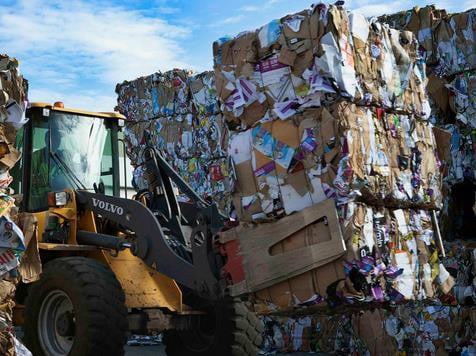
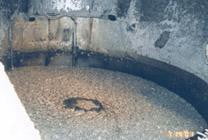
Paper Recycling
Paper is collected from residents, sorted by type and contaminates are removed. Treated chemically to produce pulp, which is poured onto a screen, dried and then rolled. The rolled paper is then made into new paper product.
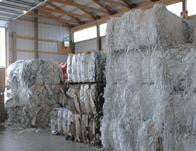

3) Volume reduction or compaction
Volume reduction or compaction refers to densifying wastes in order to reduce their volume. Some of the benefits of compaction include:
- Reduction in the quantity of materials to be handled at the disposal site.
- Improved efficiency of collection and disposal of wastes.
- Increased life of landfills.
- Economically viable waste management system.
However, the following disadvantages are associated with compaction:
- poor quality of recyclable materials sorted out of compaction vehicle.
- Difficulty in segregation or sorting (since the various recyclable materials are mixed and compressed in lumps).
- Bio-degradable materials (e.g., leftover food, fruits and vegetables) destroy the value of paper and plastic material.
5) Composting
The overall composting process can be explained as follows:
Organic matter + O2 + aerobic bacteria CO2 + NO3 + H2O + end product + energy
Composting process is an environment friendly means of recycling organic materials and not a means of waste disposal.
6) Volume Incineration
This refers to the controlled burning of wastes, at a high temperature (roughly 1200 –1500 oC), which sterilises and stabilises the waste in addition to reducing its volume. In the process, most of the combustible materials (i.e., self-sustaining combustible matter, which saves the energy needed to maintain the combustion) such as paper or plastics get converted into carbondioxide and ash.
Incineration may be used as a disposal option, when land filling is not possible and the waste composition is highly combustible. An appropriate technology, infrastructure and skilled workforce are required to operate and maintain the plant.
7) Sanitary landfill
It is a technique for safe disposal of solid urban refuse onto soil, with no damage to public health. Unlike the non-engineered disposal, sanitary landfill is a fully engineered disposal option in that the selected location or wasteland is carefully engineered in advance before it is pressed into service. Engineering methods enable waste disposal confined to least possible area covered with soil layer after each working day. Operators of sanitary landfills can minimise the effects of leachate (i.e., polluted water which flows from a landfill) and gas production through proper site selection, preparation and management.
This particular option of waste disposal is suitable when the land is available at an affordable price, and adequate workforce and technical resources are available to operate and manage the site.
Environmentally Sound Solid Waste Management (ESSWM)
The fundamental principles of ESSWM, which take into account economic and social issues along with environmental impact consideration, include the following:
- To ensure sustainable development of the ecosystem and human environment.
- To minimise the impact of human activities on the environment.
- To minimise the impact on the environment and maximise the ecosystem’s carrying capacity.
- To ensure the implementation of ESSWM through environmentally sound technologies.
Disposal by Sanitary Landfill
Over reliance on conventional type waste management such as landfills and incineration is not sustainable (landfills are major source of methane (CH4), a powerful GHG, and land costs are getting very high).
Environmental Impacts of Landfill
Effects to surrounding area
- Fugitive materials (e.g. plastic bags) Odor
- Noise
- Traffic
Leachate generation
- High BOD and COD
- High nitrogen
- High salt
Gas emission
- Green house gases: Methane and Carbon Dioxide VOCs
Classification of landfills
- Class I landfills or secure landfills These handle hazardous wastes.
- Class II landfills or monofills These handle designated wastes. Which are particular types of wastes such as incinerator ash or sewage sludge and are relatively uniform in characteristics and require special handling.
- Class III landfills or sanitary landfills Engineered facilities designed to handle municipal solid waste
What is a Sanitary Landfill?
Sanitary landfills are sites where waste is isolated from the environment until it is safe. It is considered when it has completely degraded biologically, chemically and physically.
Leachate is the liquid that drains or ‘leaches’ from a landfill. It varies widely in composition regarding the age of the landfill and the type of waste that it contains. It usually contains both dissolved and suspended material.
In older landfills and those with no membrane between the waste and the underlying geology, leachate is free to egress the waste directly into the groundwater. Modern sanitary landfills are constructed to prevent leachate contamination of groundwater.
Design Goals for Sanitary Landfills
Design goals for sanitary landfills could include:
- To serve the disposal needs of a specific community or region;
- To protect groundwater quality by eliminating leachate discharge;
- To protect air quality and generate energy by installing a landfill gas recovery system;
- To use landfill space efficiently and extend site life as much as is practical;
- To provide a plan for using the land once the site is closed.
Basic Landfill Design Considerations
As a minimum, four basic conditions should be met by any site design and operation before it can be regarded as a sanitary landfill:
- Full or partial hydrogeological isolation: lining materials should be brought to the site to reduce leakage
- Formal engineering preparations: designs should be developed from local geological and hydrogeological investigations
- Permanent control trained staff should be based at the landfill to supervise site regular operation and maintenance.
- Planned waste emplacement and covering: waste should be spread in layers and compacted.
1) Site Selection
The location and characteristics of the site will determine the extent and nature of the impact of a sanitary landfill on public health and the quality of the surrounding water, air, and land resources.
A typical procedure for selecting a site either at the regional or local level in an industrialized country involves:
- Identification of five to ten possible sites.
- This step is followed by a pre-feasibility analysis. This lead to the selection of two to five candidate sites.
- The next step of the process is to allow the public to comment on the sites.
- Finally, a decision is made and a site is selected.
Waste Operations: Base Liner System
Waste Operations: Compacting
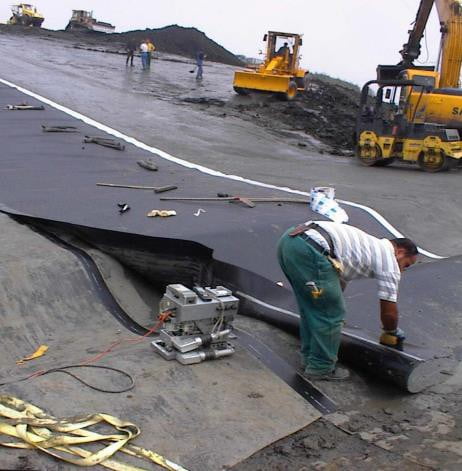
2) Decomposition in a landfill
The decomposition of landfill materials can be thought of as a four-stage process:
- Acido-genesis: aerobic phase. When wastes are placed in a landfill, there is enough oxygen for aerobic decomposition to take place for the first few days. Oxygen level drops at the end of this phase.
- Aceto-genesis: anaerobic conditions prevail. Hydrolyzing-fermentative organisms produce enzymes that break down complex organics into simpler products. Bacterial called acetogens then convert these to simple organic acids. The pH of leachate drops. Heavy metals are solublized.
- Methanogenesis unsteady: Methanogens (bacteria) convert organic acid into CH4.
- Methanogenesis steady: typically after a year or so after landfill cell is completed, CH4 production becomes steady. After many years, decomposition process declines significantly.
volatile fatty acids (VFA)
3) Landfill Gas Composition
| Methane: | 45 – 60% |
| Carbon dioxide: | 40 – 60% |
| Moisture content: | Saturated |
| High heating value: | 16000-20000 kJ/m3 |
| Other content: | N2, NH3, H2S, H2, VOC |
| Generation Rate: | 70 m3/1000 kg MSW |
4) Degasification System
Collectors for landfill gas in the landfill body vertical and horizontal elements.
- Collecting pipes from the landfill body to substations
- Gas transport pipes from substations to central gas station
- Condensate trap at deepest point of gas collection system
- Compressor station
- High temperature flare and Combined Heat and Power Plant (CHP)
- Power feeding to grid or own utilization of power
5) Leachate Collection and Treatment
- Leachate pipes at the base liner of the landfill
- Steady decline to a low point outside the landfill body Collecting in a circular pipeline around the landfill Intermediate storage in a leachate pond
- Leachate treatment plant or disposal to a waste water treatment plant
- Introducing into water, a river or a sewer
Composition of Leachate
6) Leachate Collection and Treatment
Multi-Stage Leachate Treatment Plant
A) Biological Pre-Treatment (Tanks or Basins)
Nitrification and De-Nitrification
B) Membrane Filtration
7 Bar excess pressure, retention of bacteria
C) Chemical Wet-Oxidation
Ozone treatment, cracking of long-chain hydrocarbons
D) Biological Retreatment
percolation or trickling filter
Hazardous Waste Management
Hazardous Waste
- A hazardous waste is defined as any waste, excluding domestic and radioactive wastes, which, because of the physical, chemical or infectious characteristics, can cause significant hazards to human health or the environment when improperly treated, stored, transported or disposed of (WHO, 1987).
- Hazardous waste means any waste other than radioactive waste considered hazardous or legally defined as hazardous in the country where it is situated or through which it is conveyed, because of the potential risk to man or the environment likely to result from an accident or from improper transport or disposal (OECD, 1990).
Background
The OECD (Organisation for Economic Cooperation and Development) recognised the need to control the movement and management of hazardous wastes and its international trade as early as 1974.
Concern arose particularly out of the fact that significant quantities of hazardous waste were being exported.
This led to the development of a classification system for hazardous waste, the International Waste Identification Code, and ultimately to the formation of the Basel Convention, an international agreement that regulates the import and export of hazardous waste between OECD and non-OECD countries.
Six steps to determine hazardous waste
EPA recommends that organisations follow a six step process to determine whether a waste is hazardous. The steps are listed below, expressed as a series of questions:
- Is it “solid waste”? (Does it meet the regulatory definition of a “solid waste”?)
- Is it excluded? (Does it fall under a regulatory exemption?)
- Is it listed? (Is it included in a specific list of wastes?)
- Is it characteristic? (Does it have a specific set of properties?)
- Is it a mixture? (Even if not itself hazardous, is it mixed with hazardous wastes?)
- Is it derived from a hazardous waste?
EPA has studied and listed as hazardous hundreds of specific industrial waste-streams. There are four lists:
- F list: Solid wastes from certain common industrial or manufacturing processes as hazardous. Because the processes producing these wastes can occur in different sectors of industry, the F list wastes are known as wastes from nonspecific sources.
- K list: The K list designates particular solid wastes from certain specific industries as hazardous.
- P list and U list: These two lists are similar in that both list pure or commercial grade formulations of certain specific unused chemicals as hazardous.
- D characteristic waste: Wastes not specifically identified elsewhere, that exhibit properties of ignitability, corrosivity, reactivity or toxicity.
EPA assigns a hazard code to each waste listed on the F, K, P, and U lists. The hazard codes assigned to listed wastes affect the regulations that apply to handling the waste. For instance, acute hazardous wastes accompanied by the hazard code (H) are subject to stricter management standards than most other wastes. These hazard codes are listed below:
1) The F List: Wastes From Nonspecific Sources
F list wastes usually consist of chemicals that have been used for their intended purpose in an industrial process. That is why F list wastes are known as “manufacturing process wastes.” The seven categories of F-listed wastes are:
- Spent solvent wastes
- Wastes from electroplating and other metal finishing operations
- Dioxin-bearing wastes
- Wastes from the production of chlorinated aliphatic hydrocarbon
- Wastes from wood preserving
- Petroleum refinery wastewater treatment sludge
- Multisource leachate
2) The K List: Wastes From Specific Sources
To determine whether a waste qualifies as K-listed, two primary questions must be answered.
First, is the facility that created the waste within one of the industrial or manufacturing categories on the K list?
Second, does the waste match one of the specific K list waste descriptions? The 13 industries that can generate K list wastes are:
- Wood preservation; Inorganic pigment manufacturing;
- Pesticides manufacturing; Inorganic chemicals manufacture;
- Explosives manufacturing; Organic chemicals manufacturing;
- Petroleum refining; Primary aluminum production;
- Secondary lead processing; Iron and steel production;
- Ink formulation; Coking;
- veterinary pharmaceuticalsmanufacturing;
3) The P List: Discarded Commercial Chemical Products
The P-list includes about 239 different “acutely toxic” substances, listed under about 135 different waste codes. (Some codes cover several substances.) A small quantity — one kilogram — of a P-listed waste can cause a facility to be classified as a “large quantity generator,” and to have to comply with more stringent rules as a consequence.
4) The U List: Discarded Commercial Chemical Products
The U-list includes about 472 distinct materials, listed under about 247 different waste codes. (As with the P-list, the same code can refer to several different materials.) Some chemicals used to treat cancer patients during chemotherapy fall on either the U or P lists.
Characteristic Hazardous Wastes
EPA tried to identify characteristics which, when present in a waste, can cause death or illness in humans or ecological damage. RCRA provides another set of criteria for classifying a waste as hazardous. Whatever its composition, a waste is considered hazardous by RCRA if it exhibits any of four characteristics:
- Ignitability (D001)
- Corrosivity (D002)
- Reactivity (D003)
- Toxicity (D0xx, where xx represents two digits from 04 through 43, and denotes a specific toxic chemical)
A) Ignitability
Ignitable wastes are wastes that can readily catch fire and sustain combustion. Many paints, cleaners, and other industrial wastes pose such a fire hazard. Most ignitable wastes are liquid in physical form.
A waste is considered “ignitable” under RCRA if it is:
- a liquid with flash point under 140oF, or
- a non-liquid, but susceptible to vigorous burning by friction, water absorption, or spontaneous chemical change, or
- a flammable compressed gas, or
- a strong oxidizer
(The “flash point” of a liquid is the temperature at which the vapor above a pool of liquid will catch fire under a standard set of conditions.)
B) Corrosivity
Corrosive wastes are acidic or alkaline (basic) wastes which can readily corrode or dissolve flesh, metal, or other materials. They are also among the most common hazardous waste-streams. Waste sulfuric acid from automotive batteries is an example of a corrosive waste.
EPA uses two criteria to identify corrosive hazardous wastes:
- The first is a pH test. Aqueous wastes with a pH greater than or equal to 12.5, or less than or equal to 2 are corrosive under EPA’s rules.
- A waste may also be corrosive if it has the ability to corrode steel in a specific EPA-approved test protocol.
C) Reactivity
A reactive waste is one that readily explodes or undergoes violent reactions. Reactive wastes include:
- Materials that generate toxic gases in contact with water
- Wastes that contain cyanide or sulfide and can release toxic gases in contact with strong acids or bases
- Explosive materials, or materials that are explosive when heated
Common examples include: lithium sulfur batteries, discarded explosives etc
D) Toxicity
When hazardous waste is disposed of in a land disposal unit, toxic compounds or elements can leach into underground drinking water supplies and expose users of the water to hazardous chemicals and constituents.
To measure this potential, the rules specify a test called the Toxic Characteristic Leaching Procedure, or TCLP (EPA Method 1311). The test is designed to give some indication of how readily various materials would tend to leach into groundwater if
the waste were placed in a landfill.
Generators Identification and Requirements
Generators are divided into classes depending upon the rate at which wastes are produced.
RCRA Generator Classes
While reduction and recycling are desirable options, they are not regarded as the final remedy to the problem of hazardous waste disposal. There will always be a need for treatment and for storage or disposal of some waste.
- Treatment: Any method, technique or process designed to change the physical, chemical or biological character of hazardous waste so as to render it non-hazardous or safe for dispose of.
- Storage: The holding of hazardous waste for a temporary period at the end of which the hazardous waste is treated, disposed or stored elsewhere.
- Disposal: The discharge, dumping, deposit, injection, spilling, leaking or placing of any hazardous waste into or on any land or water.
Hazard Waste Management
A logical priority in managing hazardous waste would be to:
- Reduce the amount of waste generated in the first place.
- Stimulate Waste Exchange
- Recycle
- Detoxification through chemical and biological treatments
- Waste Volume Reduction (e.g. Dewatering)
- Incinerate combustible hazardous waste with proper pollution control
- Solidify/Stabilise above remaining waste to avoid leaching
- Dispose of remaining treated residues in specially designed landfills.
Treatment Technologies
Hazardous waste management converts the waste material into less harmful or environmentally benign chemicals by biological, physical, chemical and thermal processes, followed by the disposal or dispersal of the solid, liquid or gaseous products or residues under managed conditions.
Because of the widely differing physical and chemical characteristics of hazardous wastes, treatment technologies have to be carefully matched to each waste type, taking into consideration the nature of the wastes, the degree of hazard reduction required, as well as economic, and other factors.
A) Biological treatment
Involves treatment of waste by bacteria, fungi, or algae to remove and degrade the hazardous constituents.
B) Carbon adsorption
Use of activated carbon to adsorb hazardous waste constituents. Gaseous and aqueous waste streams can be treated by carbon adsorption.
C) Extraction
Removal of hazardous constituents from either gaseous or liquid waste streams by means of settling, filtration, adsorption, absorption, solvents, or other means. Although the extracted hazardous constituents are removed from the waste stream, they usually must be treated further to render them less toxic.
D) Chemical oxidation
Use of strong oxidizing agents (e.g. hypochlorite, peroxides, persulfates, percholorates, permanganates, etc) to break down hazardous waste constituents to render them less toxic or mobile.
E) Chemical reduction
Use of strong reducing agents (e.g. sulfur dioxide, sulfides, iron salts, etc) to break down hazardous waste constituents to render them less toxic or mobile.
F) Deactivation
Changing the hazardous nature of the waste by neutralizing the characteristics of ignitability, corrosivity, and/or reactivity.
G) Micro encapsulation
Coating the surface of the waste material with a thin layer of plastic or resin to prevent the material from leaching hazardous waste constituents.
H) Incineration
High temperature burning (rapid oxidation) of a waste (1600 to 2500 oF). Also known as controlled-flame combustion or calcination and destroys organic constituents in waste materials.
I) Industrial Furnace
Use of thermal energy to recover energy or materials. It includes cement kilns, lime kilns, aggregate kilns, phosphate kilns, coke ovens, blast furnaces, smelting furnaces, etc.
J) Vitrification
Use of high temperatures to melt hazardous waste into molten glass. Subsequent cooling of molten glass material results in solid blocks of material which are resistant to leaching hazardous constituents.
K) Waste to Energy Incineration
Usually associated with municipal waste combustion where the waste is burned at a high temperature. Heat energy is recovered from the combustion process and is usually used to generate steam and or electricity.
L) Stabilization
Reduces the mobility of the hazardous constituents of a waste or that makes the waste easier to handle. The most common stabilization agents added to waste streams are Portland cement, lime, fly ash, and cement kiln dust.
M) Boilers
Use controlled flame combustion and recover thermal energy in the form of steam or heated gases.
N) Treatment in tanks
Mechanical settling, gravity settling, chemical oxidation, and neutralization are examples of hazardous waste treatment technologies that are allowed to take place in tanks by RCRA. Thermal treatment in tanks is not generally allowed by RCRA unless the facility obtains a disposal or combustion permit.
O) Wastewater treatment units
Tanks that are part of a wastewater treatment facility and are used to treat or store hazardous wastewater or sludge.
They come in different sizes and designs to accommodate various waste management systems. These custom storage tanks can be either vertical or horizontal, tailored to the specific requirements of the facility. Their properties are meticulously crafted to ensure optimal containment and treatment of hazardous substances.
P) Steam stripping
Removal of organic compounds from liquid waste streams. Direct application of steam to the liquid and subsequent condensation of the extracted organic compounds.
Disposal
- Landfill
- Land application
- Deep-well injection
- Ocean Dumping
- Thermal treatment (volume reduction)
Surface Impoundments
• Surface impoundments = store liquid hazardous waste
• Shallow depressions are lined with plastic and clay
• Residue of solid hazardous waste is transported elsewhere
• The underlying clay layer can crack and leak waste
• Rainstorms cause overflow, contaminating nearby areas
Deep-well injection
Deep-well injection = a well is drilled deep beneath the water table and waste is injected into it
- Long-term disposal
- The well is intended to be isolated from groundwater and human contact
- Wells become corroded and leak waste into soil
Radioactive waste is especially hazardous
- Radioactive waste is particularly dangerous and persistent
- Geologic isolation = using the absorptive capacity and impermeability of naturally occurring rock to block contaminants
- Multiple-barrier approach = engineering the facility to place as many barriers as possible, both physical and chemical, in the pathway of any escaping contaminants
- Brownfields = sites that have been contaminated but have the potential to be cleaned up and remediated


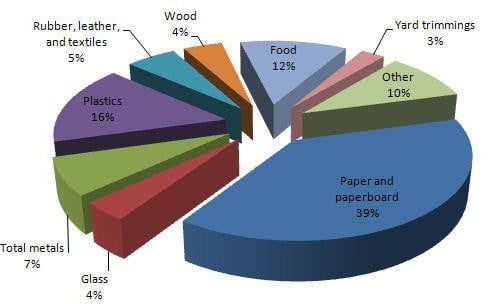
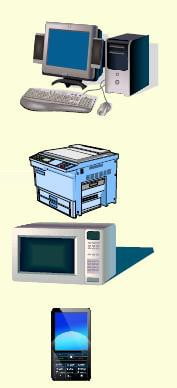

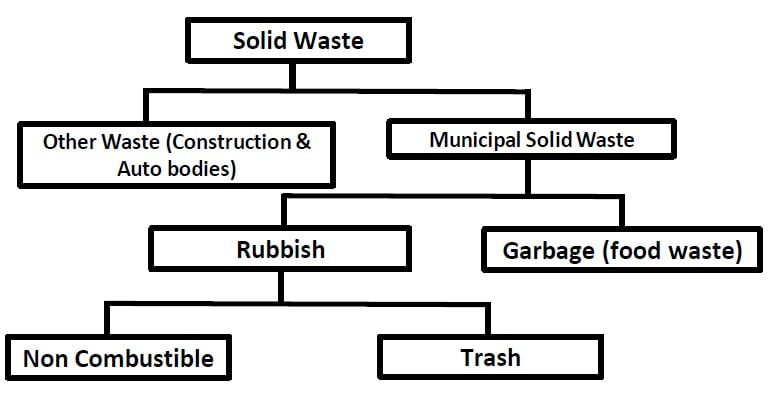
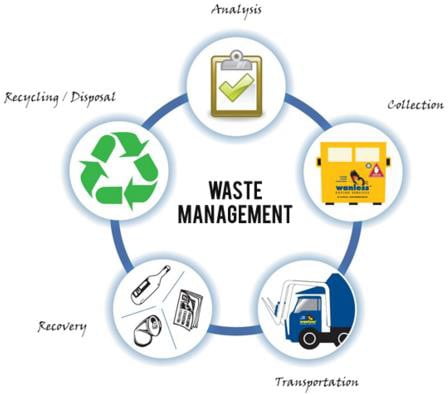

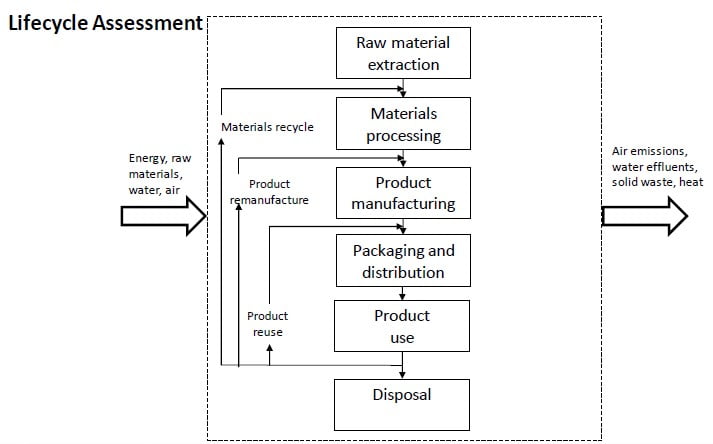
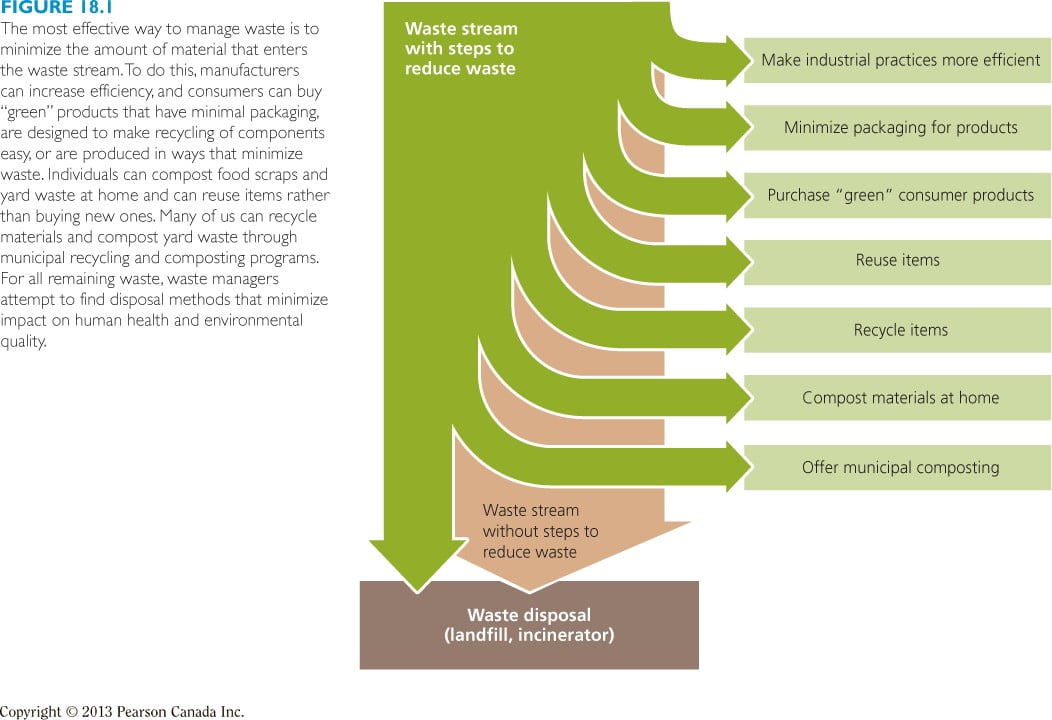

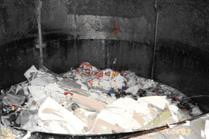
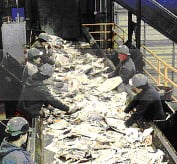
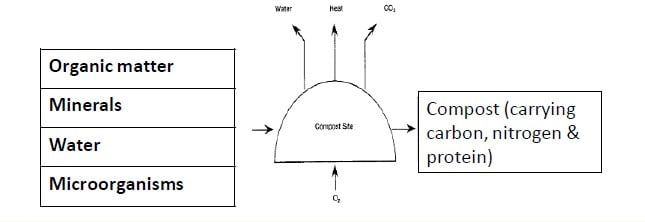

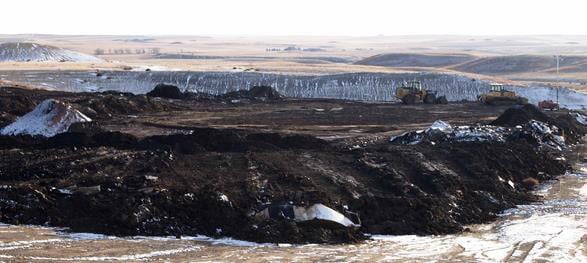
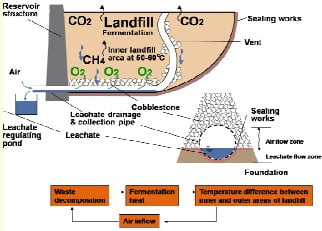
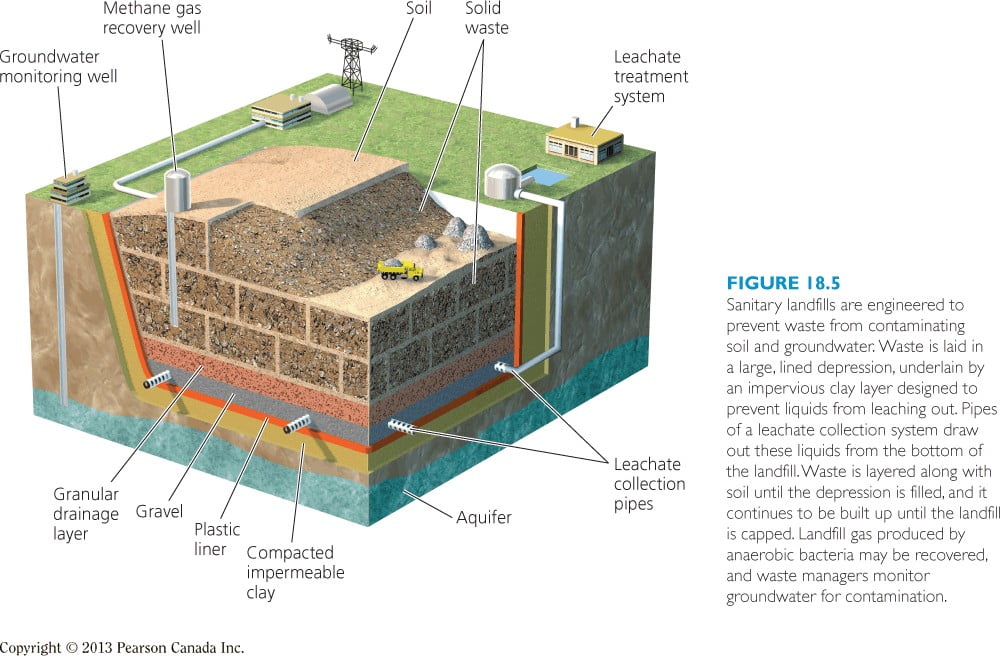
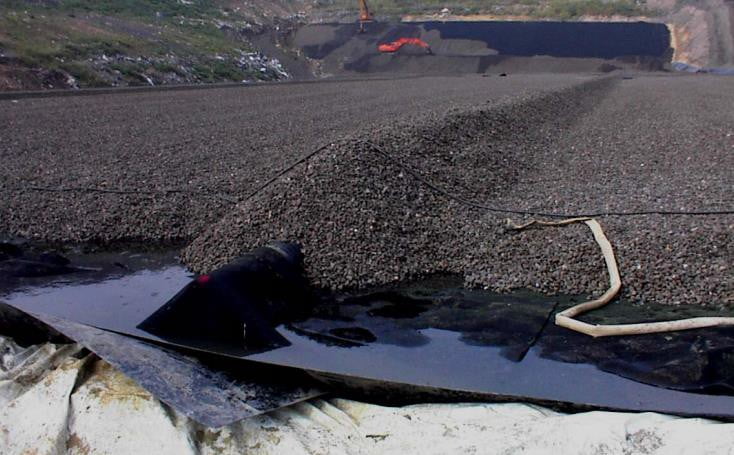

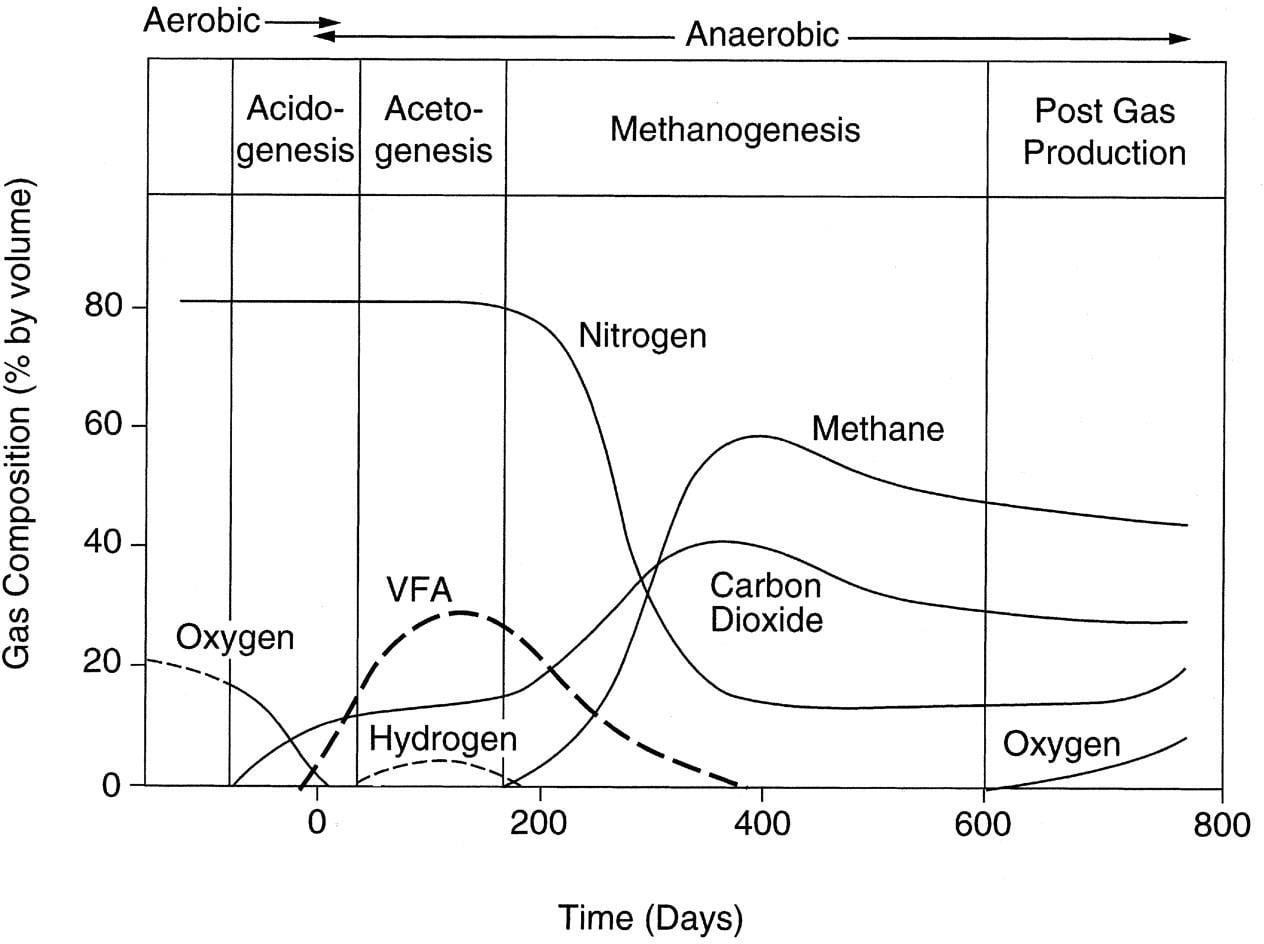
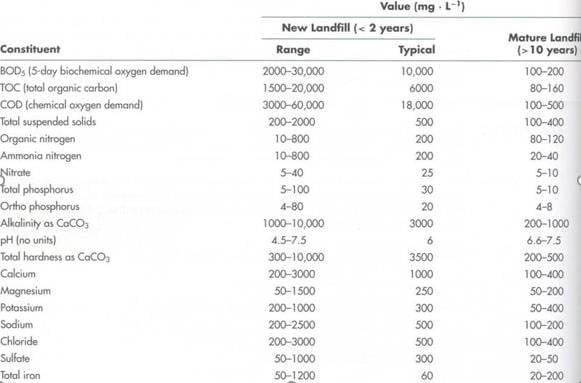

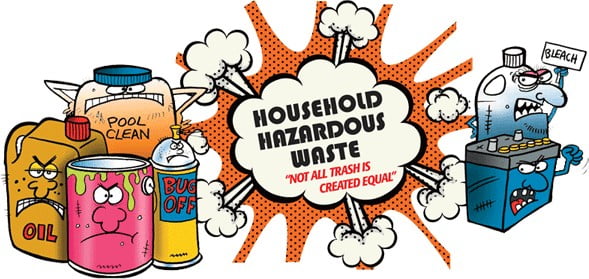



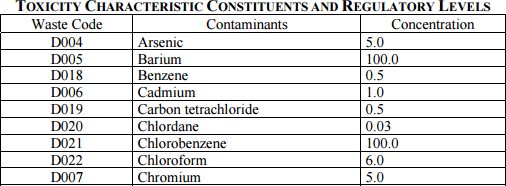



 Deep-well injection = a well is drilled deep beneath the water table and waste is injected into it
Deep-well injection = a well is drilled deep beneath the water table and waste is injected into it

